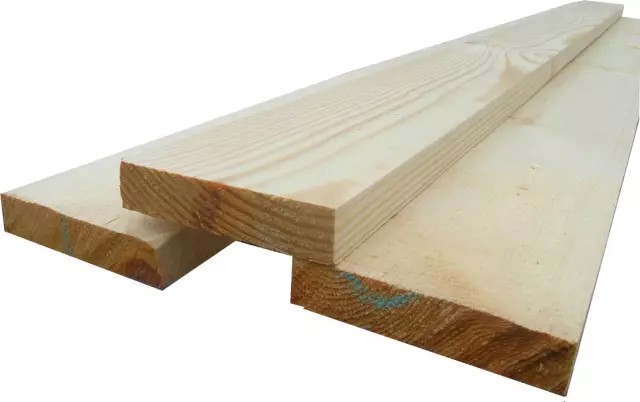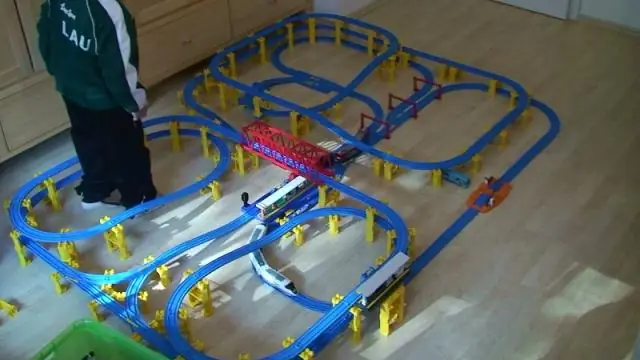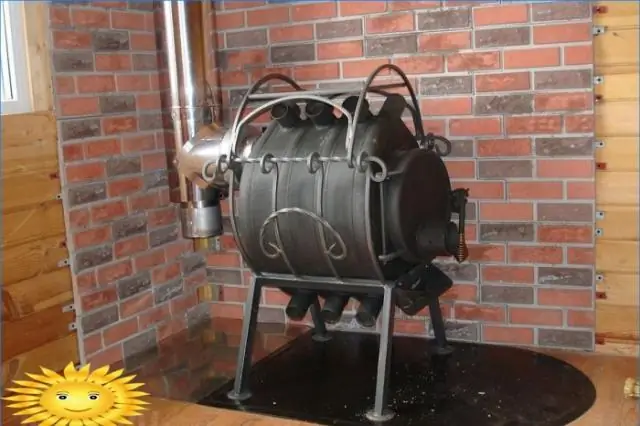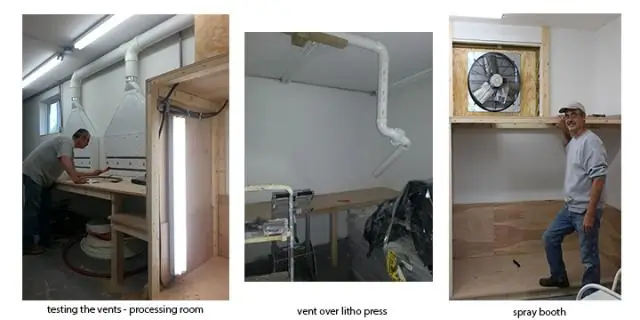
Table of contents:
- Author Bailey Albertson [email protected].
- Public 2024-01-17 22:26.
- Last modified 2025-06-01 07:32.
We build our own gazebo for barbecue and barbecue

At present, for most of the inhabitants of our country, a dacha is a place for a good rest, equipped with all conceivable amenities. And devices for preparing food in the open air take first place among such amenities.
Content
-
1 Types of outdoor cooking devices
- 1.1 Brazier
- 1.2 BBQ
- 1.3 Grill
- 1.4 Video: features of different types of braziers
-
2 Types of gazebos for barbecue, barbecue and grill
- 2.1 By stationary device for frying food
- 2.2 By design features of the building
- 2.3 According to the material from which the gazebo was built
-
3 Choosing a future gazebo
- 3.1 Photo gallery: options for projects of garden structures
- 3.2 Video: design of a gazebo with a cooking device
-
4 Construction of a gazebo made of wood
-
4.1 Materials for creating a wooden gazebo
4.1.1 Table: materials for construction
- 4.2 Required tools
- 4.3 Preparatory phase
- 4.4 Construction of a gazebo
-
4.5 Brazier construction
- 4.5.1 Foundation
- 4.5.2 Bricklaying
- 4.6 Completing the installation of the arbor
- 4.7 Finishing and arrangement of the finished building
-
- 5 Video: building a gazebo with a barbecue with your own hands
Types of outdoor cooking devices
Shish kebab can be called the most favorite dish of Russians on vacation. You can fry a shish kebab, having only skewers or a grill, having built a kind of barbecue from clay, stones or bricks. But it is much more comfortable and civilized to do this in the country, using all the amenities. Accessories such as a grill, barbecue or barbecue are very helpful for the country cook. They are used for grilling meat, poultry, fish, vegetables and mushrooms on coals, but differ only in the complexity of the design and additional capabilities. Before building a gazebo for such a brazier, you need to understand which of these devices will be more convenient, useful, cheaper for you.
Brazier
This is the simplest of all devices: a rectangular metal box with legs. Smoldering coals lie right at the bottom of the barbecue, and the heat from them is directed from the bottom up. On the side walls at the bottom there are holes for creating traction, and in the upper part there are recesses for storing skewers. The brazier is often foldable and does not have a lid. It is easiest to take it with you on a picnic or on a camping trip, along with skewers or a wire rack. Skewers are separately attached to the barbecue. It is better if they are steel, twisted, with sharp ends. Some people prefer a folding grille. On it you can fry large pieces of meat or fish, meat products: wieners, sausages, cutlets.

On the simplest folding grill, you can cook food using skewers and a wire rack
B-B-Q
There is still a lot of controversy about the word "barbecue". One of the best interpretations is its origin from the French “barbe et queue” - “from beard to tail”. Initially, not pieces were roasted on the wire rack, but whole lambs or pigs. In Russian, this device received the affectionate name "barbecue woman".
A barbecue differs from a barbecue in that it has a more complex device. The design of the barbecue provides two grates - for coal (it provides good traction) and for food (food is fried directly on it). Like the brazier, the barbecue does not have a lid. This is a more complex and expensive device. Stores sell ready-made barbecues, which are a metal structure on high legs, often with a lid and additional folding shelves. In more expensive models, the distance between the grates can be changed, which allows you to regulate the strength of the heat and makes cooking very easy. The heat in a barbecue, as in a brazier, is directed from the bottom up.

The barbecue design has two grates - for coal and for frying food
Sometimes the word "barbecue" is the name of a whole large structure on the site, the so-called garden fireplace. It is usually built of brick or stone, with a solid roof and a food preparation table.

The so-called garden fireplace can include a brazier, grill, boiler, barbecue
Often everything is inserted into a garden fireplace at once: a brazier, a barbecue, a grill, a cauldron (boiler) and a sink for washing meat and vegetables. Usually, it is these structures that are covered with gazebos.

A garden fireplace can be covered with a canopy, or you can first build a gazebo, and then arrange a suitable brazier in it.
Grill
The grill differs from the charcoal grill in that it has a charcoal grate and a lid that allows heat to be exposed from all sides, not just the bottom. But if you fold it or put it aside, then the grill will work like a regular barbecue. It does not look at all as elegant as a garden fireplace, but looks like a barrel or a large flat cauldron. In the grill, it is possible to regulate the air flow to the coals and the roasting product, for which there are dampers in the lower and upper halves. Sometimes he is equipped with an umbrella for collecting falling coals. Thanks to the lid, the cooking speed increases, and the finished dish turns out to be stewed rather than fried - and therefore more useful.

The grill differs from the grill and barbecue by the presence of a lid
Video: features of different types of braziers
Types of gazebos for barbecue, barbecue and grill
The gazebo can be built over any brazier, be it a portable grill, a grill on wheels or a garden fireplace. Such buildings can be divided into types, distinguishing them by the stationarity of the device for frying food, by the design features of the gazebo and by the material from which it is built.
By stationarity of the device for frying food
-
Brazier or grill - portable. In this case, a domed hood with a pipe must be planned in the roof of the gazebo, and the gazebo itself can be quite light and represent a simple roof on pillars to protect the brazier from the weather.

Gazebo over the barbecue light A large canopy over the barbecue can also be called a gazebo
-
Frying devices are capital, they are built of stone or brick. In this case, the gazebo is a single structure with them, since the pipe of the garden fireplace is permanently brought out through the roof of the gazebo.

Capital gazebo A capital, but open gazebo can be integrated with a garden fireplace
-
Fireplace option: brazier, grill and barbecue portable or capital: brick or stone, but without a pipe. In this case, a domed hood is being built in the gazebo, and the whole structure is most like a fireplace with a central location in the room.

Wooden gazebo A gazebo with a domed hood allows you to use a portable brazier in it
By design features of the building
-
Open gazebo. Maybe just a roof on poles. Used to protect the fryer from the elements. Not suitable for use in the cold season.

Summer open gazebo It is comfortable to rest in an open gazebo only in good weather
-
Semi-open gazebo. Usually with back and side walls and an open front opening. Protects from wind and bad weather, zones the territory of the site, creates comfort.

Half-open gazebo A semi-open gazebo will protect from wind and bad weather, but it is better to use it in the warm season
-
Semi-open gazebo with the ability to close a free opening. The fourth wall is a wide door and can slide or fold. The most practical type of gazebo.

Semi-open gazebo A semi-open gazebo with a glass sliding fourth wall allows for use at any time of the year
-
Closed gazebo. Suitable for use at any time of the year. It can be quite capital - even with separate areas for cooking and relaxation inside.

Closed gazebo The closed gazebo is a separate cozy outbuilding
According to the material from which the gazebo was built
-
A wooden gazebo is a simple, traditional, sustainable, beautiful and inexpensive option. It does not require a heavy complex foundation and an expensive heavy roof, such a gazebo can be easily built with your own hands. Disadvantages of a wooden structure: fire hazard and susceptibility to rotting and swelling, therefore it needs special treatment. The tree is sensitive to changes in temperature and humidity - inevitable when a fire is burning nearby from time to time. It is difficult to build a pipe or a domed hood into the roof of a wooden gazebo - a special technology is needed for insulation using high-temperature-resistant materials.

Open wooden gazebo Lightweight wooden gazebo does not require a complex foundation and expensive heavy roofing
-
A simple metal gazebo. It is easy to manufacture, sometimes it does without a foundation (it can stand on pillars cemented in the ground) or requires a light foundation. The roof of such a gazebo can also be any, the ideal option is to create a roof from metal sheets. The metal garden structure is absolutely fireproof, you can assemble it yourself. But it is quite difficult to assemble such a gazebo on bolts with your own hands, and for welding work you need to have skills. Metal is susceptible to corrosion, so it needs a thorough primer and painting. The appearance of such a gazebo can not always be called aesthetic: sometimes it looks like an industrial shed.

Open metal gazebo An open metal gazebo is easy to manufacture and has an unpretentious design
-
Forged or designer metal gazebo. Such a structure is very beautiful, but very expensive, moreover, it is difficult to build it with your own hands, it needs a serious foundation. As a rule, wrought-iron gazebos are not always functional, because they belong to the open type.

Wrought iron gazebo An author's forged gazebo can be very expensive, its price depends on the project
-
Stone or brick gazebo. This is a project that you can build with your own hands. Such a gazebo is capital, not fire hazardous, it can become almost a separate house on the site. It is easy to integrate any stove into it, even a garden fireplace. The disadvantages of building a capital gazebo are the high cost of construction and the complexity of the project. Such a gazebo requires a good foundation.

Stone gazebo A stone gazebo is almost a separate house on the site
Choosing a future gazebo
When choosing a project for the construction of a gazebo in a garden plot, the following factors must be taken into account:
- Material investments. The range of prices is huge: from the cheapest option - a slate roof on wooden posts, to the expensive construction of a full-fledged stone outbuilding for recreation.
- Whether or not to use a design approach. Maybe you just need a canopy. Or perhaps your entire estate was created in the same style, and then you need to be especially careful in developing a gazebo project, its correspondence to your house, garden, paths, water bodies.
- Dependence of the type of gazebo on the type of brazier. You can choose the design of the gazebo depending on the type of grill or barbecue available. Or, later, pick them up for the conceived project of a garden structure. The design of the chimney or dome hood in the gazebo depends on these conditions.
- The choice of material for building a gazebo. With an equal price of building materials, their features should be carefully studied.
- Finally, you need to sensibly assess your construction skills: for a welded metal arbor you need the qualifications of a welder, for a stone one - a bricklayer, carpenter, roofer. The easiest to execute will be a wooden open gazebo.
Photo gallery: options for projects of garden structures
-

Gazebo project - You can choose an open gazebo project for a capital furnace
-

Arbor floor scheme - Before building a capital closed gazebo, you must draw a floor diagram
-

Metal gazebo project - From a profile metal pipe, you can make not a simple canopy, but a round comfortable gazebo
-

Bar gazebo project - Construction of a simple wooden gazebo made of timber and slate will cost less than other projects
-

View from above - A closed gazebo can be built with a blind area
-

Arbor on supports - The gazebo can be quite small, and the frying device can be built next to
-

Gazebo-canopy - A glass roof can be built on a welded metal gazebo
Video: gazebo design with a cooking device
Construction of a gazebo made of wood
As an example, we took a simple project: an octagonal gazebo made of wood with a brick barbecue.
Materials for creating a wooden gazebo
In order to understand what and in what quantity of materials will be needed for the construction of the gazebo, it is necessary to make a schematic step-by-step drawing with the dimensions of all parts and use a calculator. You need to calculate:
- The amount of timber per frame. It is considered according to the length of the timber laid in the structure. Usually the length of one unit of timber is 3 meters. It must be borne in mind that each bar in the gazebo is one-piece, and not made up of parts. The amount of the "business" bar is considered similarly.
- The number of boards on the floor, for battens and benches. It is calculated according to the simplest calculation of the area, you just need to know it for each structure node. For 1 square meter, 10 running meters of a floorboard will go, 6-7 running meters of a board for lathing, 7-8 running meters of a grooved board for benches. That is, with a total length of benches, for example, 8 meters and a width of half a meter, we have 4 square meters of a bench, which will take 30 running meters of grooved board. When buying a block house in a store, its passport will necessarily include the consumption per square meter of surface.
- The number of corner, profile, plates. Directly depends on the design.
- The amount of gravel. Depends on the area and depth of the hole dug under the concrete posts.
Also, we must not forget about the 25% margin, laid down for material scrap, your mistakes and inaccuracies in the project.
Table: materials for construction
| Wooden beam | 100x100 mm | According to the calculation |
| Wooden block "business" | 15x20 mm | According to the calculation |
| Wooden board | 50x100 mm | According to the calculation |
| Wooden board for roof lathing | 30x150 mm | According to the calculation |
| Wooden board (grooved) | 30x125 mm | According to the calculation |
| Untreated wooden board made of pallets | No more than 30 pieces | |
| Sheathing material, imitating logs, block house | 50x150 mm | According to the calculation |
| Corrugated fittings | section 10 mm | No more than 3 meters |
| Reinforcement mesh | section 4 mm, cell 80x80 mm | No more than one roll |
| Galvanized corners | 100x100x90x2 mm for 135 about | According to the calculation |
| Galvanized corners | 100x100x90x2 mm under 90 o | According to the calculation |
| Hot-rolled angle | 50x50x5 mm | 7 meters |
| Oven umbrella made of galvanized sheet | 1 piece | |
| Galvanized post profile | 50x50x3000 mm | 1 piece |
| Galvanized connecting plate | 80x40x2 mm | According to the calculation |
| Concrete foundation posts | any section | According to the calculation, but not less than 14 pieces |
| Roofing material for waterproofing | Small flap about 2 meters | |
| Cement | M400 | 250 kg (5 bags) |
| Building sand | homogeneous, fine | 750 kg |
| Red solid brick | "Vitebsky" | 400 pieces |
| Fireclay refractory brick | ShB8 | 100 pieces |
| Refractory mortar mixture | 75 kg (3 bags) | |
| Furnace mortar mixture | 200 kg (8 bags) | |
| Gravel | According to the calculation | |
| Antiseptic for severe conditions "Snow" for surface treatment adjacent to the ground | According to consumption per 1 m 2 of wooden surface | |
| Antiseptic "Biotex" for painting the gazebo from above | According to consumption per 1 m 2 of wooden surface | |
| Yacht varnish | According to consumption per 1 m 2 of wooden surface | |
| Bitumen | ||
| Bituminous shingles | According to the calculation | |
| Ridge-cornice bituminous tile | According to the calculation | |
| Nails, screws | 1.8x20 mm or others | According to the calculation |
| Lacquer thinner | 1 bottle |
Required tools
To build a gazebo, you will need:
- Bayonet shovel.
- Shovel shovel.
- A device for mixing concrete.
- Saw.
- Bulgarian.
- Plane.
- Master OK.
- Expander of seams.
- Miter box.
- Drill.
- Hammer set.
- Set of screwdrivers.
- Set of hatchets.
- Mallet.
- Roulette.
- Plumb line or level.
- String and pegs for marking.
- Brushes.
After you have chosen the gazebo project and purchased a sufficient amount of materials, as well as prepared the necessary tools, you can proceed directly to the construction of the structure.
Preparatory stage
We determine the place. It is desirable that there is water nearby, and not too far to walk from the house.
Then we choose the orientation of the gazebo in space. It is best if its entrance is opposite the door of the house. So it is much more convenient to set the table and remove the leftovers from the meal.
Construction of a gazebo
After the location and orientation of the gazebo in space are selected, you can start construction.
- We outline the contours of the gazebo according to the drawing using two pegs and a string.
- We take out the soil layer to a depth of 50 cm according to the outlined drawing - for concrete posts.
- We fill the holes with a gravel-sand mixture, tamp it with a little water.
- We install the posts so that there is a post under each joint of the wooden structure. We knock them out with a mallet, leveling the height.
- On each column we place a piece of roofing material for waterproofing.
-
We cut the strapping beam using a miter box for maximum precision. We collect it from the inside and outside on galvanized corners under 135 o. To take the cross beams harvested board and secure the corners at 90 on.

Strapping on posts We collect the lower strapping inside and outside on galvanized corners
- We mark and saw the boards on the flooring. They and the lower harness must be treated very well with an antiseptic several times. The front part of the boards must be smoothly planed with a plane.
-
Then we assemble the floor on a strapping, fasten it with self-tapping screws. Do not forget about the hole for the barbecue.

Floor installation When assembling the floor, you should leave a hole for a brick barbecue
-
The rafter system and roof are easier to assemble at the bottom. We use prepared boards, and we make the rafter lock from a bar and a galvanized rack profile, cut into equal parts 5-6 centimeters long.

Rafter lock The rafter lock is made of a bar and a galvanized rack profile
-
We mount the rafter umbrella from the boards.

Rafters The boards are fixed in the lock, forming a rafter umbrella
- We collect the upper harness from a bar at the corners.
-
We make the rafters. Along the edge of each beam, we cut an acute-angled recess to fix the rafters on the strapping.

Slots in the rafters The rafters are fixed on the upper harness by sawing out an acute-angled notch along the edge of each timber
-
We put the pillars. We need 10 pillars from a bar with a height of two meters. Fasten their corners at 90 on, two or three for each column. The pillars are exposed on a plumb line or hydro level.

Support The pillars under the roof of the gazebo must be installed along a plumb line or hydro level
-
We collect the upper harness on the posts, carefully reinforce everything with corners.

Connection of supports The upper harness should be fixed on the posts with corners
-
We collect the rafter system at the corners.

Roof top The rafter system is fixed with corners
- We mark, we saw on the rough and we cut the board for lathing the roof of the gazebo.
-
We begin to lay the crate in a circle from the bottom up, as if sawing off the ends along the miter box. We leave the hole for the brazier pipe, which should be 10 centimeters larger than the diameter of the pipe itself. We put the crate on the screws - 4 for each board. We leave the roof alone for now until the pipe of the future barbecue is installed.

Sheathing flooring The hole in the roof of the gazebo for the brazier pipe should be 10 cm larger than the diameter of the pipe itself
-
We sheathe the walls of the gazebo with a log simulator - a block house - with self-tapping screws. It creates additional stiffening ribs.

Log simulator Wall cladding creates additional stiffening ribs
-
We decorate the "mangal" part of the gazebo with a wooden lattice made of a 15x20 mm bar. First one way, then the other.

Grill around the barbecue The part of the gazebo, reserved for the barbecue, can be decorated with a wooden lattice from a bar
Barbecue construction
For a while we stop working on the gazebo and do the barbecue. Our brick brazier consists of a woodshed, furnace space, vault (smoke box) and a pipe.
Foundation
In our project, the grill is capital, therefore, it is required to build a foundation for it.
-
Digging a hole for the foundation. Since the barbecue is not a house and not a stone gazebo, the foundation may be shallow. We choose 40 centimeters soil.

Foundation pit The foundation for the barbecue can be shallow - up to half a meter
-
We build formwork from used pallet boards.

Formwork It is possible to mount the formwork for the brazier foundation from the boards already in use.
-
At the bottom we lay roofing material for waterproofing, we fix it to the walls of the formwork with a stapler.

Waterproofing Roofing material in a pit under the barbecue is needed for waterproofing
-
We put the pre-cut reinforcement and mesh in the pit.

Armature Before pouring concrete into the pit, put reinforcement
- We knead the cement mixture at the rate of 1 part of cement for 3 parts of sand, the consistency of the solution should be like liquid sour cream.
-
Pour the cement mixture into the formwork.

Ready foundation The base of the barbecue should dry within two weeks
-
Cover with foil. Let it dry for two weeks.

Place for barbecue You can start laying bricks only on a dry foundation.
Bricklaying
There are several principles for laying bricks that must be followed:
- Before laying each brick, it must be soaked in a bucket of water for at least 10 minutes - otherwise the brick will take too much water from the mortar and quickly and the masonry will be fragile.
- The mortar for masonry should be quite liquid - such a consistency that the brick can be knocked into the correct position simply by hand.
- Each row must be laid on the hydro level, checking the masonry both horizontally and vertically.
- We must try to make thin identical seams between the bricks.
The construction of a stone barbecue includes the following stages:
-
We spread the first row of the barbecue on roofing material for waterproofing.

First row The first row of bricks should be laid out on roofing felt
-
We finish the woodshed with a red brick shelf, then we begin to lay out the furnace space with the same brick.

Barbecue shelf The woodshed under the barbecue can be made of red brick, not fireclay
-
We lay out the furnace space on top with refractory fireclay bricks.

Close-up of firebox floor The furnace space should be laid out with fireclay bricks.
-
We close the combustion space on three sides with brick walls and begin to lay out the smoke collector.

Smoke box masonry A smoke collector should be laid above the furnace space of the barbecue
-
We finish the smoke box and continue it with a pipe.

Ready grill The grill pipe completes the smoke collector
Completing the installation of the gazebo
When the laying of the barbecue is completed, you should return to the construction of the gazebo.
- We take the pipe into the prepared hole in the crate.
- We cover the roof along the lathing with bituminous tiles. We cover the joints with ridge-cornice bituminous tiles.
- We coat the exit point of the pipe with bitumen.
-
We cover the wooden parts of the gazebo with an antiseptic in two layers. After drying - with yacht varnish in one layer.

Brazier in action The wooden parts of the gazebo must be covered with an antiseptic and yacht varnish
Finishing and arrangement of the finished building
A ready-made gazebo can be landscaped: for example, make a bench and a table inside.
- We mount the window sills from the board to the corners at 90 o.
-
We make supports for the benches - two on each side of the octagon, in the form of triangles. We attach them to the corners too.

Creating benches Supports for benches in the gazebo must be attached to the corners
-
On the supports we mount benches made of grooved boards. We fasten the ends of the boards with connecting plates for strength.

Ready benches Finished benches in the gazebo should be smooth
-
In the middle of the finished gazebo, we attach a folding table.

Gazebo table A folding table can be installed in the gazebo, which will not interfere with the movements of the cook at the beginning of cooking
-
We decorate the space next to the finished wooden gazebo using various decorative elements.

Finished wooden gazebo A wooden gazebo will be a great place to relax with the whole family if you approach its creation wisely and carefully
Video: building a gazebo with a barbecue with your own hands
We built a simple gazebo, but it turned out to be cozy and beautiful. To create such a structure with your own hands, you do not need much time, money and effort.
Recommended:
How To Make A Bar Stool With Your Own Hands From Wood, Metal And Other Materials + Drawings, Photos And Videos

Bar stools manufacturing options. Required tools, materials used. Step-by-step description of the manufacturing process with a photo
How To Make A Veranda With Your Own Hands To The House - Instructions, Projects, Drawings, Photos And Videos

The article describes how to build a veranda close to the house with your own hands
Making A Buleryan (breneran) Stove With Your Own Hands: Advantages And Disadvantages Of The Design, A Device With Drawings, Instructions With A Video, Etc

Design and principle of operation of the "Buleryan" furnace (breran). DIY recommendations with instructions and drawings. Maintenance and operation
How To Make A Kite With Your Own Hands At Home: Options With Drawings And Sizes + Photos And Videos

DIY kite: the necessary materials, diagrams, drawings, manufacturing steps. How to make a kite of different shapes. Secrets of a Successful Launch
How To Make A Long Burning Stove With Your Own Hands: Manufacturing Instructions With A Diagram And Drawings + Video

How to make a long burning stove with your own hands. Consumables, recommendations, diagrams, design features
